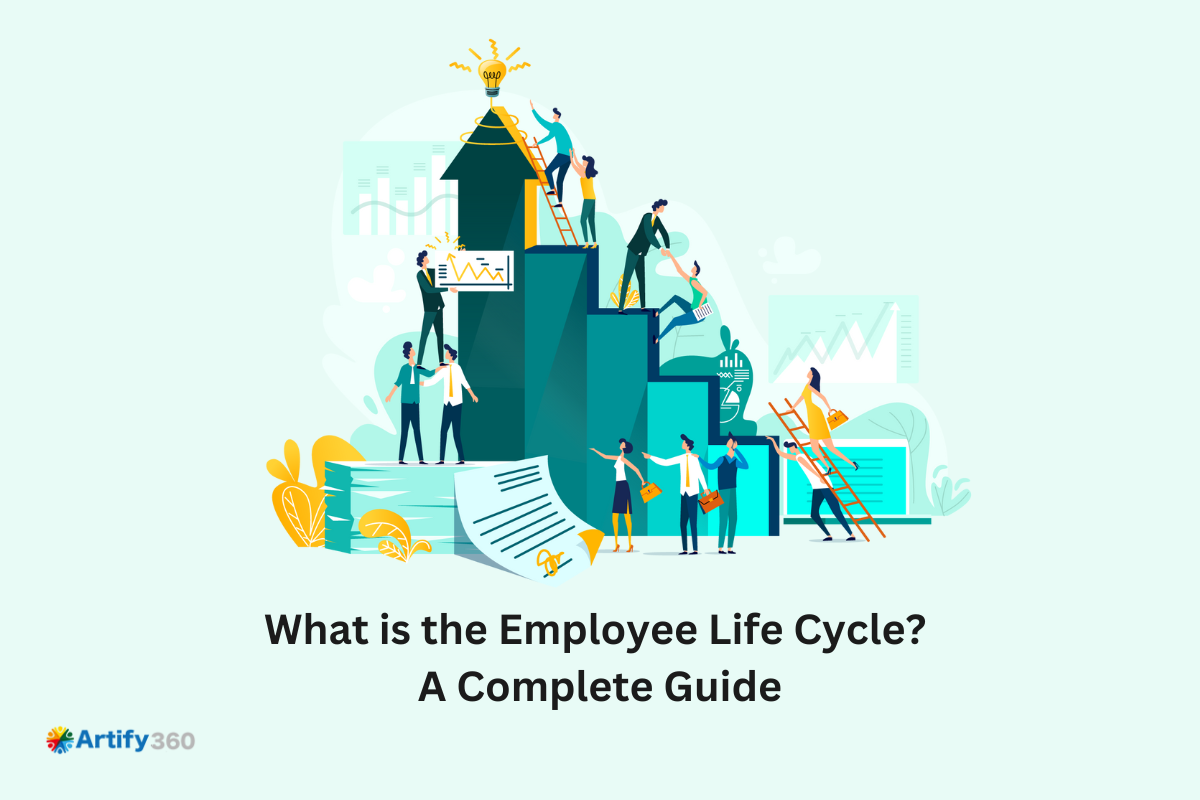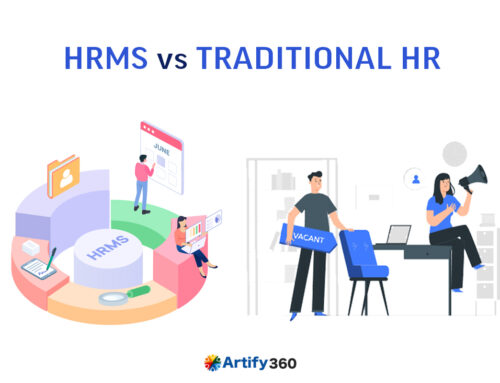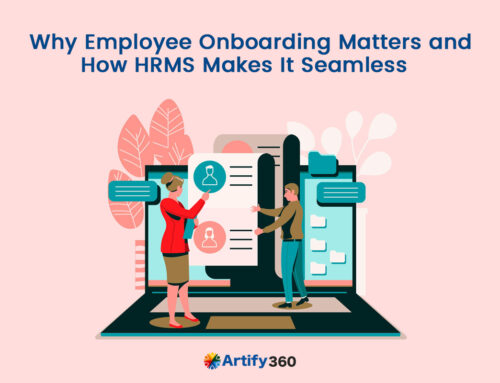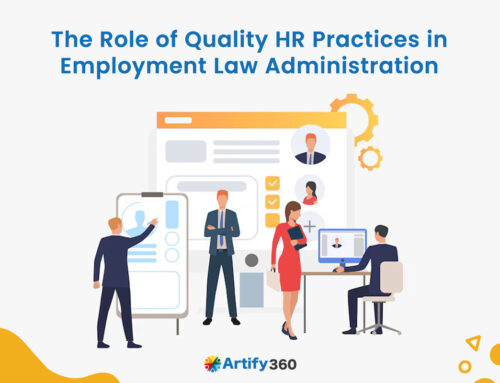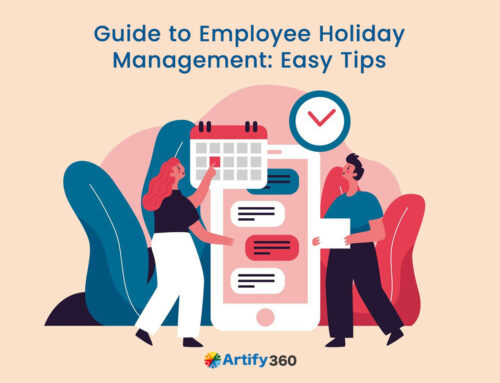If you can pinpoint one concept that works effectively well to develop the human capital resources in your organization, it is employee engagement. Of all the techniques that you can deliver to promote employee engagement measure, the most important is the wholesome journey from start to finish of a resource’s journey in the organization. It spells the way to the authentic concept of the employee life cycle.
This article delves deeper into the topic and its role in defining the employer branding fortunes of your organization. Apart from the glorious purpose it serves, you can get a first-hand look at the different stages of an employee’s life cycle. The application, impact, and various benefits of the subject are covered in this post.
Hop in to learn more about the realistic and grounded value of the employee life cycle to boost your organization’s operational features. Discover the role of digital automation platforms like engaging software in dealing with this particular parameter for resource management, performance enhancement, operational efficiency, and business productivity.
The Concept of Employee Life Cycle
When you deploy employee life cycle management techniques, it can raise the levels of the entire organization with ease. As for the integration of an active lifecycle with dedicated HR concepts, the use of a digital transformation portal is sufficient. Life cycle management includes the entire journey of the employees in the organization.
It covers an employee’s hiring process and offboarding procedures. You can consider the recognition stage before hiring and the alumni stage after the resignation in the life cycle terms related to a resource.
The key stages in an employee’s lifecycle are uniquely dependent on creating core integrations in the operations domain of the organization. When an employee goes from one stage to the other, it is considered a transition process. If you can optimize this process, it will enable your company to perform infinitely well from a core HR operations perspective.
Employee lifecycle helps understand the importance of resource interactions and collaborative processes in a firm. It is applicable in the career planning, analysis, development, and successful growth of your employees.
Opportunities for pivotal professional aspects are part of this particular operations management process. Life cycle management is part of determining a cornerstone project in company culture and operations process. The guided workflow of this model is listed in the upcoming sections.
Purpose of Defining Employee Life Cycle
The impactful reason for promoting employee lifecycle in your organization is a splendid one. When you focus on capable management of an organization’s operations process, employee engagement occupies one of the peak roles. It can empower you to build and develop an active performance culture and HR management experience.
You can study the organization’s changes and employee dealing methods when you connect and collaborate with an active lifecycle management system within the business model. It is feasible for your company to illustrate an employee’s complete professional journey in the organization.
Once the employee life cycle stages are recorded and analyzed, it is a pathway for building core support for your organization to build a consistent HR operations module network effortlessly. You can visualize the entire segment in this format. The key steps in lifecycle management and HRMS platform processes are usually in sync with each other.
Different Stages of Employee Life Cycle
When you decide to implement an empowering employee lifecycle management in an organization, it presents you with the opportunity to collaborate with various tools and techniques. It ensures the adoption of different phases of the lifecycle management of your employees.
Check out the explanation of the stages below:
Attracting the employee through employer branding
The promise of a feasible employee lifecycle begins with an exclusive employer branding model. You should take care of this function to attract the ideal candidates that match your organizational values and definitive professional descriptions.
Sourcing and recruitment process
Even though you can attract numerous candidates who could potentially contribute to your company functions, it is vital to source and recruit resources that match the quality of the profiles that you want. The hiring process is a frontrunner for the holistic employee engagement program.
Onboarding, training, and development
Once you hire the employees, proceed with their efficient onboarding with feasible techniques that match the organizational principles. The next step is training and development to help your resources learn the process that will suitably help them acclimatize.
Employee engagement functions
The HR division of your organization should consciously deliver employee engagement functions that are unique to the business model and a specific human capital resource. Consistency is key to promoting this feature without fail.
Resource retention strategies
Once you discover and deploy an employee in your organization to match the core human resource needs and business management performance, the next step is to focus on retaining the specific employees. Reduction of employee turnover rates is essential for imparting quality to your employee lifecycle management. Even a hassle-free employee layoff could cost more than 30% of the particular resource’s salary, according to reports.
Offboarding and exit of employees
When you consider employee management principles and strategies in an organization, it should involve smooth offboarding methods. It includes features such as exit interviews, feedback collection, and employee-employer relationship management.
Alumni and ambassadorship stages
You can shift your ex-employees to the alumni section of the organization. It will help you to include them in the development of your organization until their career retirement stage. They can serve as goodwill ambassadors for your organization in the extensive market.
How Do You Apply Employee Life Cycle Operations?
The application of employee engagement through life cycle management in an organization is explained in the following points:
Visualize the brand
The biggest deal in the feature of employee lifecycle execution is the visualization of the entire brand and process with significant ease. You and your employees should be able to apply visualization strategies to the workflow and business process management.
Promote diversity
The stages of the employee lifecycle should be in such a way as to capably deal with the principles of diversity, inclusion, sustainability, and trust matrix integrations.
Anticipation of staff behavior
If you can deliver your staff benefits and collaboration practices based on an anticipatory process to access the behavior, attitude, and character of your resources, it helps with an essential life cycle management model.
Information and Collaboration
Data and information should be readily available for you to manage an inclusive organizational operations process with space for collaboration and support.
Feedback model
You should be open to receiving constructive criticism, feedback, resource reviews, and engaging ideas/suggestions to arrive at the optimum employee life cycle model that fits your organization’s scope and potential.
Leverage resource possibilities
The sensible option to increase the possibilities in resource handling is efficiently managed by the adoption of an empowering solution in the employee lifecycle management scenario that matches your business model.
Uses & Merits of Employee Life Cycle in Organizations
The beneficial advantages of the employee life cycle in your organization can be summarized with the use cases listed below:
Boosts employee experience
You can improve the holistic experience of your employees with a dedicated lifecycle management model in the organization. It helps you boost satisfaction levels, morale, and resource utilization capacity.
Core professional growth
Career development is a promise in an engaging employee management model. It helps your staff members to grow professionally and aid in the business contributions.
Better business opportunities
You can improve the whole operations process with an excellent chance of improving the core business management model. It will enable you to promote better opportunities in the growing market conditions. Harvard Business Review states that you can raise the revenue prospects of a company by 50% with greater employee experience support.
Recognition of work culture
It is ideal for your company to create a recognizable work culture among peers for optimal success. Employee lifecycle management is one of the parameters to offer this benefit.
Drives performance and productivity
When you have a thorough employee management process, it is feasible for your business model to excel in performance and productivity metrics. This factor matters for the bigger picture of a business model.
Talent engagement techniques
When you have a genuine life cycle process for employees, the provision of talent acquisition and management objectives will be easier to follow. Your company can gain strategic ground in this format.
Solid employer branding
Effective employer branding is crucial for you to develop a strong foundation and positioning for your organization in the market. Employee lifecycle management is directly proportional to this feature.
Enhancing the overall business value
The validity and value of your business process depend on the resource management tactics employed by the organization. You can enhance the same with a dedicated and proven employee lifecycle system.
Creating A Positive Employee Life Cycle Impact with Artify 360 HR Software
When you decide to create an exclusive and engaging employee life cycle in the organization with a creative model, the ideal route is to follow digital transformation and automation. Cloud HR software with streamlined functions and employee-friendly modules are the best options in this format.
An example solution to effectively implement this technology is the Artify 360 HR Software. We have developed Artify as an empowering HR software system that uniquely transforms employee engagement, performance management, and business productivity objectives in your organization.
The promising concept of this particular model is the deployment of HR operations management to deliver innovative technology solutions and practices to boost the resources’ lifecycle. If you want to learn more about the possibilities of this essential HR payroll software to boost the quality of your employee lifecycle management, feel free to reach out to us.
Our team can connect you with a demo session on how Artify brings about positive changes to the core HR management realm. You can understand the possibilities of the portal before proceeding with the proven, end-to-end HRMS solutions provider.

